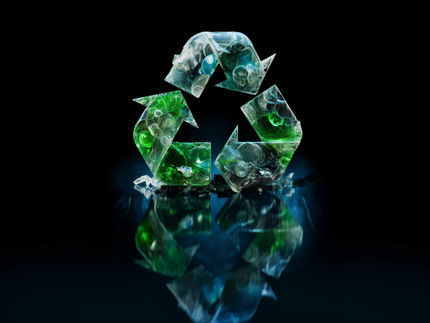Intrepid early-career researchers who are fearlessly tackling difficult global problems
Talented 12: Chemical & Engineering News announces its 2023 rising stars in chemistry
Advertisement
Chemical & Engineering News (C&EN), an independent news outlet of the American Chemical Society (ACS), has unveiled its annual “Talented 12” list. The list highlights early-career researchers in the chemical sciences who are fearlessly tackling difficult global problems. These intrepid innovators in chemistry are featured in the May 19 issue of C&EN.

Symbolic image
Computer-generated image
Using a rigorous review process, C&EN selected this year’s Talented 12 from a highly competitive pool. The world-changing work by this year’s group includes research with a variety of applications from medicinal chemistry to investigations of energy to improving sustainable practices.
Below is the list of 2023’s Talented 12 class.
- Iwnetim Iwnetu Abate, Massachusetts Institute of Technology: This materials scientist engineers new electrode materials for energy applications.
- Alex Abela, Vertex Pharmaceuticals: This medicinal chemist makes life-changing molecules for treating cystic fibrosis.
- Athina Anastasaki, Swiss Federal Institute of Technology (ETH), Zurich: This materials chemist shows prowess for pulling polymers apart.
- Maxx Arguilla, University of California, Irvine: This materials chemist creates atom-thin wires and sheets with exciting electronic and optical properties.
- Evelyn Auyeung, Dow: This catalyst specialist wants to create plastics that are easier to recycle.
- Susannah Banziger, Corteva Agriscience: This formulation chemist uses automation to make agrochemicals more sustainable.
- Marina Evich, U.S. Environmental Protection Agency: This environmental chemist finds new ways to track down contaminants in soil and water.
- Raúl Hernández Sánchez, Rice University: This supramolecular chemist uses molecular assemblies to purify water and develop clean energy catalysts.
- Stacy Malaker, Yale University: This mass spectrometrist develops methods to study challenging sugar-coated proteins.
- Ben Ofori-Okai, SLAC National Accelerator Laboratory: This spectroscopist develops innovative instrumentation to study how matter behaves at the center of planets.
- Ezgi Toraman, Pennsylvania State University: This chemical engineer studies technologies that turn waste into fuels, chemicals and other products.
- Charlotte Vogt, Technion – Israel Institute of Technology: This spectroscopist probes catalysts to accelerate the world’s transition to clean energy.
“I loved reading about the chemists chosen as C&EN’s Talented 12 this year, and I know our audience will too,” says Michael McCoy, C&EN interim editor in chief. “These young scientists are making a mark on the world, both through their research and through outreach to the communities they live in or come from. They reassure me that chemistry will play a role in solving some of our planet’s most pressing problems.”
Members of the Talented 12 will speak about their work and their journeys during a symposium on Aug. 14, at ACS Fall 2023 in San Francisco.



























































